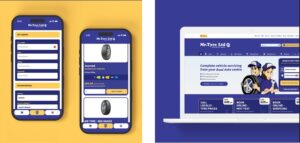
Distinction Helped the Institution of Structural Engineers with its Digital Transformation
In helping the world’s largest certified membership organisation to improve its examination and marking processes, Distinction helped transform the business, make it fit for the digital age and reduced overheads.
Modernising the qualification process
It’s all too easy to think the stress of exams resides solely at the desk of the students, nervously turning over their papers. But for the Institution of Structural Engineers, the stresses of the whole examination process went much deeper.
As the world’s largest certified membership organisation – numbering almost 30,000 – the Institute has for over 100 years offered a range of qualifications, all of which require an exam to be sat in hundreds of locations across the world. The qualifications are a valuable source of income, one which they were looking to maximise, yet one which was costing the Institute far too much to run.
Confronting a lengthy process
The problem was, the Institute was wrestling with a paper marking process which had remained unchanged for decades. They’d always done it that way, but cracks were beginning to show.
An entirely manual and physical event, this process involved collecting completed A3 exam papers by hand, placing them into boxes of 500, shipping to the UK, anonymising, splitting out into tranches of 20 and posting to individual examiners who, making life more difficult, are not always UK-based. Also requiring the marks of a second examiner, the whole process then had to be repeated. So far, so lengthy.
Recognising the need for change
Faced with such a problematic process – papers went missing, handwriting wasn’t always legible and disparate marks required the extra involvement of a third-party adjudicator. The Institute knew it was time for a change.
The financial benefits of doing so were compelling. There was the desire to avoid the spiralling costs of global postage. Then there was the need to shorten the process from its current nine months to fit in more revenue-earning exams (students were having to wait a full 12 months before being able to re-sit). Owning such an outdated process also reflected poorly on the Institute’s brand.
Diagnosing the problems
Conducting a thorough diagnosis of the current situation, including conversations with every level of stakeholder together with a little judicious fact finding, Distinction recognised that a major obstacle was in a stereotypical view of the examiners. These were often in their 60s and 70s, mainly male and recently retired. Consequently, it had always been assumed they would be resistant to change and fearful of something new.
Removing uncertainty
During their workshops, Distinction listened to the views of the examiners, and involved them in all their explorations and possible better ways forward. The agency removed the fear factor and found the prejudice was unfounded. Instead of finding opposition, their transparent and non-judgmental approach helped the examiners became healthily invested in change for the better.
And, on the first run through of Distinction’s prototype, their excitement clearly demonstrated they had more in common with the digitally-savvy exam sitters than previously thought possible.
So what was Distinction suggesting that produced such an about face? Simply that by taking the whole marking process online, by automating each stage, would make the whole journey quicker and pain-free for everyone.

Managing large amounts of data
Distinction realised that to manage the large amount of data quickly and efficiently, the system would need to be developed in four parts:
Candidate distribution and management: enabling exam managers to distribute multiple candidates to examiners and then track an individual candidate’s progress.
PDF script viewer: giving examiners a high-resolution PDF view of a script and a simple system for marking and providing feedback on each question.
Adjudication app: automating the distribution and management of by the exam manager.
Feedback app: automatically loading examiners’ comments and marks, before saving, previewing and sending a feedback email directly.
Each of these elements made life simpler and easier for examiners and enabled them to spend much less time on marking and managing each paper.
Engaging stakeholders early
All combined into one app, the seamless process brought immediate results. With six months cut from the entire process, exams were completed quicker, leading to a threefold increase in fees. Examiners were delighted to move from the cost and hassle of a physical, postage-based system.
In the end, Distinction’s early involvement proved decisive in that they could involve the audience from the very start and keep the various stakeholders engaged at every stage. Being invested in the vision, the journey to lasting change became a truly satisfying and rewarding project for everyone.
Outcome
Transforming its business had a huge impact on the Institution of Structural Engineers. The move to digital saved them £40,000 per year in shipping costs alone. The organisation’s capacity to adjudicate exams increased by 300% and the time taken to mark exams was reduced by 100%.
About Distinction
Distinction is the digital product studio who’ll make you stand out. They work with clients to disrupt their sector, challenge the competition, and capture market share by delivering experiences users love.




















